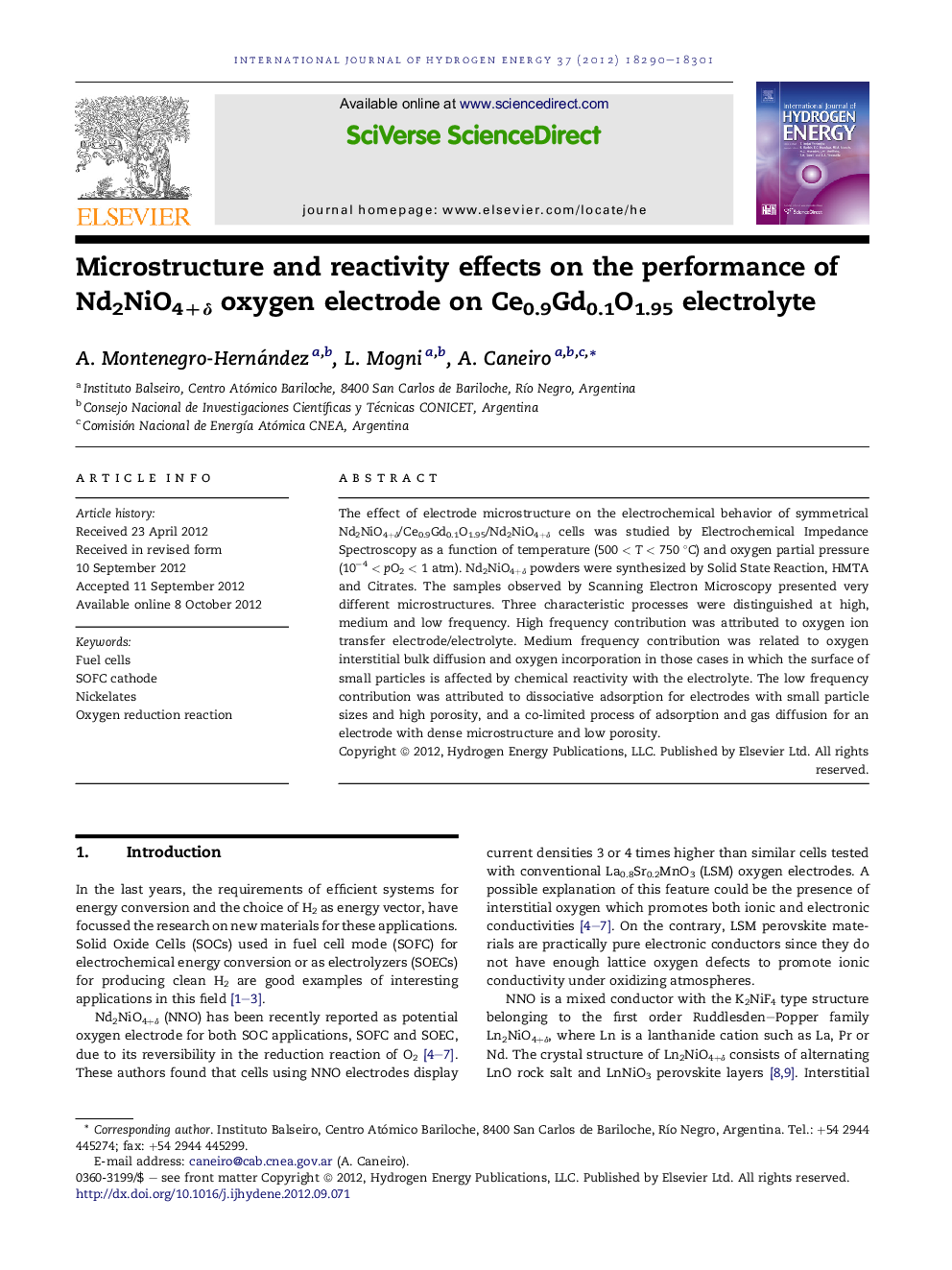| Article ID | Journal | Published Year | Pages | File Type |
|---|---|---|---|---|
| 1278345 | International Journal of Hydrogen Energy | 2012 | 12 Pages |
The effect of electrode microstructure on the electrochemical behavior of symmetrical Nd2NiO4+δ/Ce0.9Gd0.1O1.95/Nd2NiO4+δ cells was studied by Electrochemical Impedance Spectroscopy as a function of temperature (500 < T < 750 °C) and oxygen partial pressure (10−4 < pO2 < 1 atm). Nd2NiO4+δ powders were synthesized by Solid State Reaction, HMTA and Citrates. The samples observed by Scanning Electron Microscopy presented very different microstructures. Three characteristic processes were distinguished at high, medium and low frequency. High frequency contribution was attributed to oxygen ion transfer electrode/electrolyte. Medium frequency contribution was related to oxygen interstitial bulk diffusion and oxygen incorporation in those cases in which the surface of small particles is affected by chemical reactivity with the electrolyte. The low frequency contribution was attributed to dissociative adsorption for electrodes with small particle sizes and high porosity, and a co-limited process of adsorption and gas diffusion for an electrode with dense microstructure and low porosity.
► The microstructure of Nd2NiO4+δ is determinant for the oxygen electrode reaction. ► The effect of chemical reactivity is more important for small particles. ► EIS measurements were performed as a function of both, temperature and pO2. ► The oxygen electrode reaction would be affected by cathode/electrolyte reactivity.
